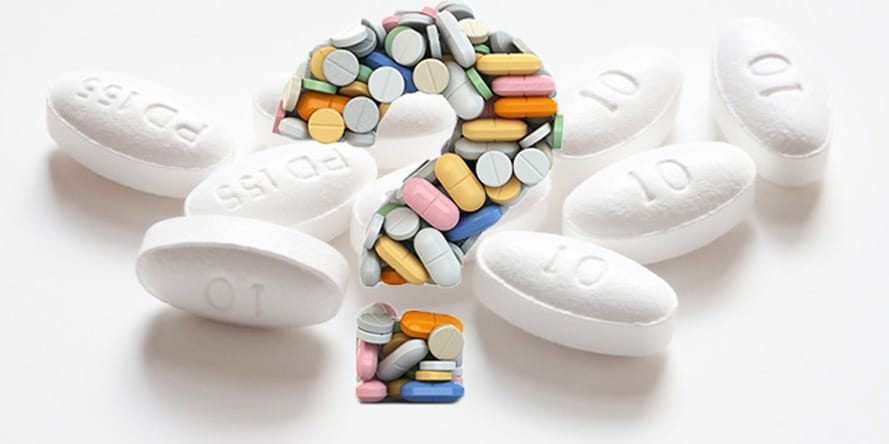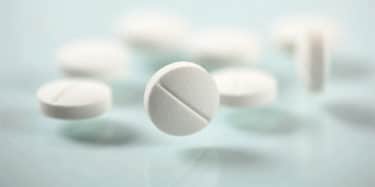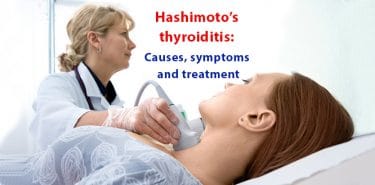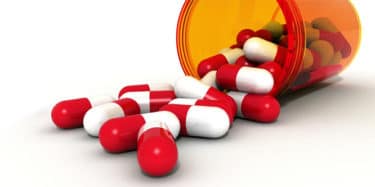Penicillin is one of the oldest and most commonly used antibiotics, and it is the first medication used against bacterial infections. Penicillin class includes many drugs. They are the main antibiotics that are widely used all over the world for many years thanks to their potent effects against bacterial infections, inexpensiveness and lesser toxic effects. Penicillin allergy is a common issue of concern, however in reality, life-threatening allergic reactions are only seen in very few of the patients. It is highly important that the patients are informed about penicillins to determine the individuals at risk for allergy and prevent unnecessarily prescribing other expensive antibiotics to the individuals who are at no risk.
Table of Contents
What is Penicillin?
Penicillin is one of the earliest discovered and most commonly used antibiotic agents. Moreover, it is considered to be one of the safest and most effective antimicrobial medications. Penicillin is the general term for the antibiotic group including penicillin G (intravenous), penicillin V (oral), procaine penicillin and benzathine penicillin (intramuscular) types.(1)
They are the first line medications that are effective against many infections caused by staphylococci and streptococci.
History of penicillin
In London 1928, Alexander Fleming discovered that some bacterial species couldn’t grow around the Penicillium notatum species fungus. Realizing that this fungus has antibacterial characteristic, Fleming lead the development of penicillin which is one of the most beneficial medications in the history of medicine.
Penicillium fungi are the most important penicillin sources. Winning the Nobel Prize together with Fleming in 1945, Florey and Chain ensured the purification, production, and obtaining different types of penicillin. As these medications were used and became widespread, millions of lives have been saved.(2)
Penicillin types
- Natural penicillins: Penicillin G is only administered via intravenous or intramuscular injection. Penicillin V has oral forms as tablet or suspension
- Aminopenicillins: Ampicillin, Amoxicillin, Epicillin
- Carboxypenicillins: Ticarcillin, Carbenicillin, Temocillin
- Penicillinase resistant penicillins: Methicillin, Nafcillin, Oxacillin, Doxycillin, Dicloxacillin, Flucloxacillin
- Ureidopenicillins: Mezlocillin, Azlocillin, Piperacillin
- Beta-Lactamase inhibitors: Amoxicillin-clavulanic acid, Ampicillin-sulbactam, Ticarcillin-clavulanic acid, Piperacillin-tazobactam (3)
What does penicillin do?
It is used for the treatment of many infections caused by bacteria. It is mainly used for the treatment of pneumonia, pulmonary inflammations, ear infections, bladder and kidney infections, certain sexually transmitted diseases, skin infection, bone and joint inflammations.
In some cases, antibiotics are given for protection rather than treating an infection. This is called ‘prophylactic’ antibiotic use.
These medications exert their effect on bacteria via two mechanisms:
- By preventing the cell wall production of bacteria
- By activating the enzymes which provides self-destruction of bacteria.
It should be noted that penicillins are useless in viral illnesses. Unnecessary antibiotic use makes bacteria develop resistance against these medications. This results in a longer medication use at a higher dose or makes the existing antibiotics lose their effect on certain bacterial species.(4)
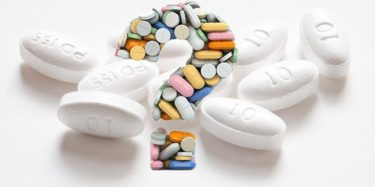
Correct usage of penicillin
Penicillin delivery type (form), dose and using period is determined based on the patient’s age, the disease and severity, other conditions and reaction to the first dose. Microbiological tests may be requested if necessary to determine the causal microorganism or the sensitivity to antibiotics.(5)
Points to take into consideration when using penicillin
- Tablet forms should be swallowed as a whole together with a glass of water.
- Suspension forms should be diluted in water, and taken orally using measuring tool inside.
- The bottle should be shaken vigorously before every use. Boiled and cooled water should be preferred for the preparation.
- The best effect via oral route is seen when taken 30 minutes before or two hours after meals, however, some medications are not affected from food.
- Try to take the medication everyday at the same time.
- IV/IM forms which are injected through vein or muscle should be prepared and administered by healthcare professional. It does not matter you are on a full stomach or not.(6)
Can I take penicillin with food?
There is no known interaction between penicillins and food.
Who shouldn’t take penicillin?
- Individuals with allergy to penicillin derivatives
- Individuals with viral illness such as common cold or influenza
- People who developed allergy to various substances in the past should not use penicillin especially at high doses.(7)
In which diseases should penicillin be used with caution?
- Asthma may increase your risk to develop allergic reaction to penicillin.
- If you have kidney problems or a history of kidney disease, your body may not be able to tolerate high doses of penicillin and derivatives.
- Dose adjustment may be necessary in heart and liver diseases.
- Medication absorption may not occur in stomach and bowel conditions.
- If you have a heart disease, certain penicillins with potassium may affect you negatively.
What drugs does penicillin interact with?
- Methotrexate
- Medications containing probenecid, aspirin, phenylbutazon, sulfonamides, indomethacin, furosemide and ethacrynic acid, and thiazide diuretic medications
- Birth control pills
- Antibiotics groups including erythromycin, tetracyclines, chloramphenicol or sulfonamides(8)
Use of penicillin in pregnancy
There is not enough evidence for use during pregnancy. Your physician will decide based on the risk/benefit ratio. If you get pregnant while using the medication, inform your physician at once.
Is penicillin safe during breastfeeding?
Penicillin and its derivatives may excrete in human milk and may have effect on the baby. Your physician will decide whether you should continue breastfeeding or not.
Penicillin doses and dose calculation
For penicillin V (phenoxymethylpenicillin)
Penicillin VK Oral Suspansion:
- 3- to 12-month (6-10 kg): 3 x 1/2 spoon (1 spoon=5mL)
- 1- to 6-year (10-22 kg) 3×1 spoon
- 6- to 12-year (22-38 kg) 3×2 spoon
Penicillin V Oral tablet:
- 18 years and older: 125–250 mg taken every 6–8 hours for 10 days.
- 12–17 years: 125–250 mg taken every 6–8 hours for 10 days.
- 0–11 years: This drug has not been approved as safe for children under 12 years of age.(9)
Penicillin G injection forms are prepared and administered by a healthcare professional based on the dose prescribed by the physician.
Penicillin overdose
In case of overdose, undesirable effects related with gastrointestinal system may be seen. If other symptoms such as rash, or swelling on the face or neck are seen, the possibility of allergic reaction should be considered.
In case of an accidental overdose for one time, temporary interruption of the medication would mostly suffice. In case of intentional use at high doses, inform your physician immediately.
When administered by a healthcare professional, penicillin injections are not expected to carry the risk of intentional or accidental overdose. Nonetheless, if the concentration in the cerebrospinal fluid gets high, neurological reactions such as convulsion, hallucination or seizure may occur. Overdose may especially affect patients with severe kidney failure.
Can babies take penicillin?
The doses in babies and children are calculated by your physician based on the body weight. Suspension/syrup form can be used in babies and toddlers. The risk of anaphylaxis is lower in children (especially in pre-school children) than adults. In newborn infections, penicillin G and ampicillin injections are the commonly used penicillin types in hospital setting. Anaphylaxis is almost never seen in newborns.
How long can you take penicillin?
Using period is determined based on your illness, age and kidney functions. Based on the type and severity of the illness, oral forms are usually used for 7-10 or 10-14 days. The treatment should be continued for 3 more days after the symptom improvement. In prophylactic use (for protection), long-term use at low doses might be necessary.
Long-term antibiotic use may increase the growth of the organisms that are not susceptible including fungi. Proper treatment should be initiated and proper measures should be taken when such infection is seen. If you stop using your medication before the date your physician told you, bacteria may get resistant to the medication.
What diseases can be treated with penicillin?
- Bone and joint infections: Arthritis, osteomyelitis
- Central nervous system infections: Meningitis
- Cardiac infections: Penicillins are usually used to prevent cardiac valve infection in patients at certain risk who are undergoing dental treatment / surgical procedures (e.g., prosthetic valve or congenital cardiac anomaly). (10)
- Infections related with obstetrics and gynecology: Penicillins are used as prophylaxis against the risk of infection in surgical procedures such as cesarean. Intra-uterine infections after the delivery can be treated effectively using penicillin.
- Respiratory tract infections: Sinusitis, otitis media, tonsillitis and pharyngitis, chronic bronchitis and pneumonia
- Urinary tract infections: Glomerulonephritis (a type of kidney infection)
- Sexually transmitted infections: Gonorrhea (clap) and syphilis
- Skin and soft tissue infections: Erysipelas, inflammatory skin diseases (impetigo, furuncle, Lyme disease), phlegmon (an infection spreading on the skin and subcutaneous tissue), lymph node and vascular infections, and for preventing infections in animal bites, injury and burns.
- Other: Anthrax, protecting children with sickle cell anemia from certain microorganisms, preventing infections during oral and maxillofacial surgery, tropical infections such as yaws and pinta
Rheumatic fever (heart rheumatism) is caused by a bacterium called streptococcus. Over the course of the disease, joint infection, cardiac valve infection or chore (involuntary muscle contractions) may be seen. The prevailing treatment for reducing the risk of rheumatic fever in streptococcus-caused throat infection is penicillin.
What is penicillin allergy?
Allergic shock (anaphylaxis) is a type of allergic reaction which is sudden, life-threatening and requires emergency action. It can be seen two minutes to one hour after the medication use, and though very rare, it may result in death. Approximately 10% of the population state that they are allergic to penicillin, however, the real figure is close to 1%, and only 0.03% of these individuals present with life-threatening allergic reactions.
Causes of penicillin allergy
When your immune system becomes hypersensitive to the medication and reacts like the medication is a harmful substance, or a viral or bacterial infection, penicillin allergy occurs. Before the immune system becomes sensitive to penicillin, it must be exposed to the medication at least once.(11)
If your immune system misperceives penicillin as a harmful substance, it produces an antibody against the medication, and next time you take the medication, these antibodies mark it and drives the immune system forces towards the substance. Chemicals released as a result cause allergic reaction.
Risk factors for penicillin allergy
- History of other allergies such as food allergy or hay fever
- History of allergic reaction to another medication
- Familial history of medication allergy
- Exposure to high-dose penicillin due to long-term or recurrent use
- Some illnesses that are usually associated with allergic reactions such as HIV or Epstein-Barr virus infection (12)
Prevention of penicillin allergy
If you are allergic to penicillins, the best thing to protect yourself is to avoid the medication. Steps you can take to protect yourself:
- Inform healthcare professionals: Your medical records should clearly state that you are allergic to penicillins or other antibiotics. Inform your dentist or physician about this.
- Wear a bracelet: Wear a medical warning bracelet specifying your medication allergy. This information can ensure proper treatment in emergency conditions.
- Carry emergency epinephrine. If your allergy caused anaphylaxis or other serious reactions, your physician will probably recommend you to use a self-injectable syringe and needle device (epinephrine auto-injector). Your physician or a healthcare professional will inform you about the use of the auto-injector (Adrenaclick, AUVI-Q, EpiPen, etc.). (13)
Symptoms of penicillin allergy
- Cough, wheezing and shortness of breath
- Watering of eyes
- Fever
- Swelling on eyelids, face, tongue and lips
- Severe rash or itching on all body
These symptoms are severe allergic reaction symptoms. They are usually manifested within a short period of time after medication use. It requires immediate medical help.(14)
If you notice delayed-type allergic symptoms such as fever, malaise, muscle and joint pain, abdominal pain, red skin and various rashes within 1-2 weeks especially after high-dose medication administration, immediately inform your physician or seek medical help.
Treatment of penicillin allergy
In case of an allergic reaction, penicillin is discontinued immediately and proper treatment is initiated. Serious anaphylactic reactions may require immediate action with epinephrine, steroids and oxygen. Procaine-induced reactions can mostly be treated using antihistaminic.
Penicillin side effects
The most common side effects include itching, redness, skin rash, abdominal pain and distension, nausea, soft stool and diarrhea. If these effects are mild, they would disappear within days or weeks.(15) If you are experiencing severe symptoms such as the following, inform your physician or seek medical help as soon as possible:
- Heartthrob
- Vomiting, fatigue, headache together with nausea
- Oral inflammation
- Blackened or hairy tongue
- Convulsion (involuntary muscle contractions)
- Bloody diarrhea
- Inflammation in the injection vessel
- Vesicle formation and itching on the skin
In case of severe pain and muscle spasm around the injection site, immediately inform the healthcare professional, the injection can be stopped if necessary. In case of repeated dose, the injection site can be changed.

